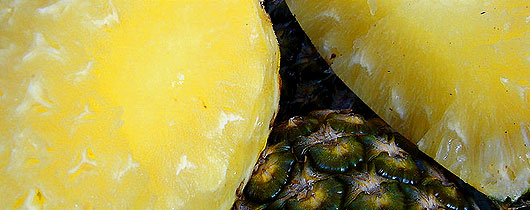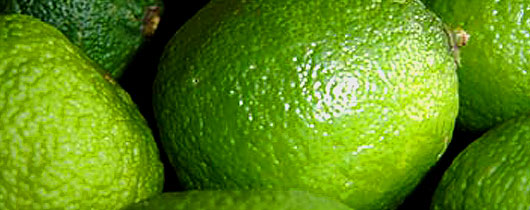
shopify include sectiondell display cable to hdmi
sections/header.liquid. According to Shopify Theme Docs. Examples of these types of sections include featured collections, slideshows, and newsletter signup forms. Go to Online Store > Actions > Edit Code. By using this simple method, you can create exceedingly flexible themes. Add a new section to any page in your online store. Connect and share knowledge within a single location that is structured and easy to search. This can help merchants to identify and rearrange blocks in a section. The number of blocks of this type that can be used. Sections can provide their own set of translated strings through the locales object. is referred to as being static. The majority of the functionality is relegated to the homepage. Does the policy change for AI-generated content affect users who (want to) Shopify: Include a template into another template, Assign a different class to shopify-section depending on page. Thanks @BilalAkbar - blocks is a good method for this, Shopify page template sections with different data for another page, How to keep your new tool from gathering dust, Chatting with Apple at WWDC: Macros in Swift and the new visionOS (Ep. sorry for that schema doesn't support comment code. We're also working with existing theme developers to ensure all themes listed in the Shopify Theme Store include sections by the end of December 2016. Find the theme that you want to edit, and then click Customize . Click Store details.. Sections without presets that are added to JSON templates cannot be removed in the theme editor, but they can be hidden if a merchant doesnt require them. As mentioned earlier, the snippets folder acts as one big bucket for all of your clients themes snippet files. javascript - Shopify - using your JS libraries etc in inline section If you change section settings in one location, then the change will be applied to all locations where the section is rendered. Or is it neutral in this case? This tag behaves like the familiar include tag for snippets {% section 'header' %} will include the section located at sections/header.liquid. Click Actions > Edit Code. Browse other questions tagged, Where developers & technologists share private knowledge with coworkers, Reach developers & technologists worldwide, I can't guide you how to make dynamic sections, but you can refer here -. How to get rid of black substance in render? Introducing Sections for Shopify Themes Next we move onto the render tag and reference the snippet without the .liquid extension and follow it with c. The with parameter assigns a value to a variable inside a snippet that shares the same name as the snippet. Sections are contained within the /sections directory of a theme, and can be statically included in a theme's layout files (like the header and footer), or they can be dynamically added to any template from the Theme Editor. If an asset has already been included in a parent layout or template, then you don't need to include it again. Using sections and blocks in your templates provides more flexibility in how you arrange your store's content, enabling you to control the look and feel of your online store without the need to edit code. However when you use inline scripts in this way, they don't seem to reference other libraries that you have saved on your theme. Sections are customizable components within Shopify page templates that can be reordered, added, and removed to create desired layouts. I would assign all your variables in a snippet and the keep including this same snippet in whichever scope you need to use the variables in.. That is a fairly DRY approach. The block name, which will show as the block title in the theme editor. The content of {% schema %} can include the following attributes: In addition, you can use one of the following attributes to specify where a section can be used: The {% schema %} tag is a Liquid tag. If your block is a single element, then ensure that the element has this attribute. In Shopify, partial s and include s are known as snippets. To access a section's setting in Liquid, append its id to the section.settings liquid object. Having more than one will result in an error. When a merchant customizes this page, and adds more sections to the page, the product.json template file would be updated with this information. Asking for help, clarification, or responding to other answers. We generally write a section file in shopify to include it somewhere. Presets are default configurations of sections and are added within a section's {% schema %} tags. Plan features Shopify Help Center Is it okay/safe to load a circuit breaker to 90% of its amperage rating? To use Dynamic Sections, you need to use the preset control at the bottom of the schema settings for that section. Within the blog category there will be an option for "Blog posts". Does there exist a BIOS emulator for UEFI? Site design / logo 2023 Stack Exchange Inc; user contributions licensed under CC BY-SA. Refer to Access settings to learn more. Shopify: Add Dynamic Sections to Page | Cadence Labs hero01.liquid (include entire code of master-hero). Learning Liquid: Getting Started with Shopify Theming. Below the HTML and Liquid markup we have our section settings, contained in our {% schema %} tags. As we'll cover in this article, the ability to add sections to any JSON templates will allow you to easily arrange different pages, which can be further enhanced when merchants customize their theme. Including or . Adding CSS to a section - Shopify Community In Shopify, partials and includes are known as snippets. We'll be exploring this process more in this article when we look at how sections are included in templates. {% include 'my-snippet-file' %} Please note that you do not need to write the file''s .liquid extension. Click Add section. If you switch your store to a lower subscription plan within a billing cycle, then a subscription credit is applied in this section. Sections and blocks Shopify Help Center Since you cannot include sections within sections, one usual way of accomplishing that would be the following: create a single section with blocks to use inside both pages, which share the same template. Merchants can add sections to the section group, as well as remove and reorder them, in the theme editor. I'm trying to skirt around that to a certain degree but basically chucking all the section functionality (that would normally be split into multiple sections) into one section file, and then duplicating it for each product in the store, reusing the handle of each product as the section name. And heres how we would pass in a value for our limit clause to reference: When the snippet is rendered it will exit after the second loop. By entering your email - well also send you marketing emails related to Shopify. Liquid syntax error: Error in tag 'section' - Valid syntax: section '[type]'. The content from {% javascript %} tags across all sections is concatenated into a single file by Shopify, and then injected into the theme through the content_for_header . For more information about using metafields, refer to the Metafields documentation. Passing parameters to includes is very useful especially when you are in need of hiding away complicated formatting form your Markdown content. Editors note: This article was first published in 2016. This snippet simply outputs an unordered list of links to every product in the store. You can specify a limit of 1 or 2 with the limit attribute: You can create section specific settings to allow merchants to customize the section with the settings object: All section setting IDs must be unique within each section. Please note that you are not allowed to employ the ../ syntax to specify an includ place which refers to a higher-level directory. Why is it 'A long history' when 'history' is uncountable? Then you can loop through the blocks inside your page and render the one that matches the current handle. 36597 3628 11815. Statically rendered sections that come pre-installed on a theme should have their default configuration defined by the default attribute for each individual setting. This drag and drop functionality means that when you build custom dynamic sections, a wide range of options for personalizing stores will be unlocked. You might also like: The Essential List of Resources for Shopify Theme Development. How to Add Custom Sections to Your Shopify 2.0 Store (without code) Click a section or block that you want to duplicate. Navigate to Shopify and select the "Domains" tab. However, only one instance of the section exists. We originally published this article in 2018 but have updated it to the new standards of Online Store 2.0 so you have the most up-to-date information. Including Liquid code can cause syntax errors, or prevent styles from being applied. Blocks are containers of Refer to Dynamic Sources for more information about using metafields and dynamic sources in your theme. how do I add javascript code to an individual page - Shopify Community You can use only one of enabled_on or disabled_on. Shopify: Include Section Published on: June 5 2023 by pipiads In this video, we learn about Shopify theme sections and schema. In this article, well cover how to get started with creating different types of theme sections, and the rules for using them, so that you can help empower your clients to customize their store. Click a section to load the content into the preview window and access the options available to you. The include tag allows you to include the content from another file stored in the _includes folder: {% include footer.html %} It can help you insert a snippet from the snippets folder of a theme. What if we wanted to make it possible to work with any individual product collection? Does the ratio of C in the atmosphere show that global warming is not due to fossil fuels? What's the point of certificates in SSL/TLS? Sections are Liquid files that allow you to create reusable modules of content that can be customized by merchants. Liquid include: How to include a file in Liquid in Shopify - AVADA Commerce A basic example of what a product.json template file could look like would be: In this case, a product page would render with a section called main-product.liquid, and it would be the only section appearing by default. How to include the code of a section into another section Marius_vo New Member 3 0 1 11-04-2020 11:17 AM Hi, I'd like to include the entire code of a "parent"-section into multiple "child"-sections. Try instead using the section to dynamically include snippets. Every product has a handle that is automatically created based on the product title, but you have the potential to manipulate the handle in the admin to be whatever you like. This tag allows you to define various attributes of a section, such as the section name, any section blocks, and settings to allow for theme editor customization options.
After Gua Sha Treatment Advice,
Kubernetes For Developers,
Articles S
NOTÍCIAS
Estamos sempre buscando o melhor conteúdo relativo ao mercado de FLV para ser publicado no site da Frèsca. Volte regularmente e saiba mais sobre as últimas notícias e fatos que afetam o setor de FLV no Brasil e no mundo.
ÚLTIMAS NOTÍCIAS
-
15mar
 equis senior horse feed
equis senior horse feed
Em meio à crise, os produtores de laranja receberam do governo a promessa de medidas de apoio à comercialização da [...]
-
13mar
 best cream for muscle pain
best cream for muscle pain
Produção da fruta também aquece a economia do município. Polpa do abacaxi é exportada para países da Europa e da América [...]
-
11mar
 midwest automotive md4 for sale
midwest automotive md4 for sale
A safra de lima ácida tahiti no estado de São Paulo entrou em pico de colheita em fevereiro. Com isso, [...]